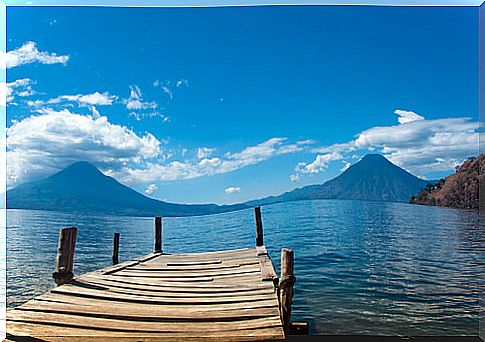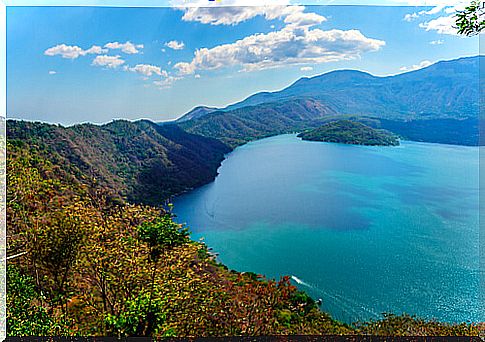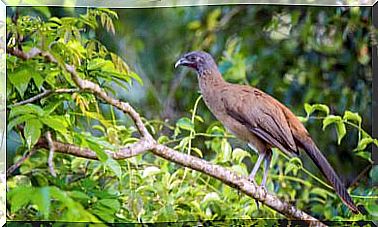Lakes And Swamps, Is It The Same Habitat For Living Things?

Lakes and swamps are different habitats, comprising their own ecosystems with a rich biodiversity. Amphibians, fish, and extensive vegetation are examples of the life forms found in freshwater regions.
According to data, it is estimated that about 40% of the world’s fish biodiversity lives in fresh water courses, such as rivers, lakes, lagoons and swamps.
Although both are freshwater ecosystems, lakes and swamps show particularities in their dynamics and forms of life that inhabit them. To better explain the difference between, we tell you its origins and also briefly introduce its fauna and flora.
Lakes and swamps: the different types of freshwater ecosystem
It is no secret that our planet Earth is made up mostly of water. Although the highest concentration is of salty masses, freshwater bodies play a crucial role for the survival of all species.
These ecosystems are classified into three main categories, according to the movement of their waters, as we see below:
- Lotus ecosystems: they are fresh water courses that experience significant movement, such as rivers, streams and springs.
- Lentic ecosystems: these are bodies that present a low or still water flow, such as reservoirs, ponds, lakes and swamps.
- Wetland ecosystems: these are regions that experience times of flooding or saturation of fresh water.
What are lakes?
In general, the formation of natural lakes occurs when a depression or basin of a certain terrain is filled with fresh water. However, the precise definition of ‘lakes’ can be somewhat complex.

When they suffer a long period of drought, lakes can be reduced to swamps or wetlands. On the other hand, a large lake can be considered as a ‘sea’. Furthermore, ‘ephemeral lakes’ tend to disappear during drought and re-fill with water in wet times.
The lakes are usually divided, theoretically, into three regions. The littoral zone appears along the shore, where vegetation and animals that feed on the surface of the water abound.
In the limnetic zone we observe the predominance of open waters and we find a good variety of fish and amphibians. The deep zone lacks major species and heterotrophs tend to predominate.
- These water courses are also classified according to their availability of nutrients and the possibility of harboring life in their waters.
- The eutrophic lakes have abundant nutrients and host a rich biodiversity of animal and plant species.
- The oligotrophic lakes have few nutrients and demonstrate a variety of much scarcer species.
And the swamps?
The concept of ‘swamp’ encompasses lowlands that are saturated with stagnant water and covered by aquatic vegetation ; We can also observe trees that are not always in the classification of aquatic plants. These formations are present on all continents, with the logical exception of Antarctica.

The swamps are formed in the vicinity of rivers, lakes or seas, from where they receive the water that covers their entire extension. The lands where we find these bodies usually have a mineral soil without natural drainage. For this reason, the water cannot follow its course and remains stagnant, which gives rise to the characteristic ecosystem of the swamps.
There are two basic types of swamps: freshwater and saltwater. Freshwater marshes are formed from sweet lakes or streams. The low salinity of its waters allows the growth of abundant surface vegetation and a remarkable aquatic biodiversity.
Salt marshes are especially common in tropical regions, where they are associated with the seas. In general, its bed is formed by sand and the surface vegetation is sparser. The presence of mud is also observed in times of high tide and its ecosystem includes only life forms adapted to the high salinity of its waters.
Why are lakes and swamps different habitats?
The forms of life that inhabit lakes and swamps are different, as they must be adapted to the specific conditions of each formation. But it is true that there are some ‘coincidences’, as some species can benefit from both ecosystems.
In the lakes, we can find aquatic and semi-aquatic animals, such as mammals (beavers and minks), birds (ducks and geese), crustaceans (crabs), reptiles (turtles) and amphibians (frogs and salamanders).
In these spaces, the numerous species of freshwater fish stand out, such as trout, sturgeon and perch. Its vegetation includes algae, reeds, ferns, shrubs, mosses, lilies, water hyacinths, etc.
In swamps, life forms vary according to the salinity of the water. The freshwater swamps are home to a large biodiversity of fish, amphibians, birds and an important forest and aquatic vegetation.
We also find reptiles, such as alligators and snakes, mammals such as otters, shrimp, crabs. The vegetation has mosses, oaks, cypresses, duckweed, etc.









